Secret history: Even before the revolution, America was a nation of conspiracy theorists
A brutal conflict in Europe was fresh in people's minds and the race for the White House turned ugly as talk of secret societies and corruption roiled the United States.
It was 1800, and conspiracy theories were flourishing across America. Partisan newspapers spread tales of European elites seeking to seize control of the young democracy. Preachers in New England warned of plots to abolish Christianity in favor of godlessness and depravity.
This bogeyman of the early republic was the Illuminati, a secret organization founded in Germany dedicated to free thinking and opposed to religious dogma. Despite the Illuminati's lack of real influence in America, conspiracy theorists imagined the group's fingerprints were everywhere. They said Illuminati manipulation had caused France's Reign of Terror, the wave of executions and persecutions the followed the French Revolution. They feared something similar in America.
From the witch trials in Salem, Massachusetts, to fears of the Illuminati, from the Red Scare to the John Birch Society to QAnon, conspiracy theories have served as dark counterprogramming to the American story taught in history books. If a healthy democracy relies on the trust of its citizens, then conspiracy theories show what happens when that trust begins to fray.
Change a few details, add in a pizza parlor, and the hysteria surrounding the Illuminati sounds a lot like QAnon, the contemporary conspiracy theory that claims a powerful cabal of child-sacrificing satanists secretly shapes world events. Like the Illuminati craze, QAnon emerged at a time of uncertainty, polarization and distrust.
“The more things change, the more things seem to come back,” said Jon Graham, a writer and translator based in Vermont who is an expert on the Illuminati and the claims that have surrounded the group for centuries. “There’s the mainstream narrative of history. And then there’s the other narrative — the alternative explanations for history — that never really goes away.”
Just like today, these bizarre stories often reveal deeply rooted anxieties focused on racial and religious strife and technological and economic change.
The most persistent conspiracy theories can survive on the fringes for decades, before suddenly reappearing with new details, villains and heroes, often at a time of social upheaval or economic dislocation. Sometimes, these beliefs can erupt into action, as they did on January 6, 2021, when a mob of President Donald Trump's supporters broke into the U.S. Capitol.
In America's early days, the villain was the Illuminati.
Created in 1776, the group was part of a fad of supposedly secret societies that became fashionable in Europe. It was defunct by 1800 and had no presence in the U.S. Still, claims spread that Illuminati agents were working undercover to take over the federal government, outlaw Christianity and promote sexual promiscuity and devil worship among the young.
The theory was picked up by the Federalist Party and played a key part of 1800 presidential race between President John Adams, a Federalist, and Vice President Thomas Jefferson, a Democratic-Republican. Rumors circulated among Federalists that Jefferson was an atheist who would hand America over to France if elected president.
Jefferson did win, and the Federalists never fully recovered. Tales of the illuminati receded, but soon the Freemasons emerged to take their place in the wild imaginings of early Americans.
The Freemasons counted many leading figures, including George Washington, as members. Their influence fueled whispers that suggested the fraternal organization was a satanic conspiracy bent on ruling the world.
To understand why so many were convinced, it's important to remember the anxiety that followed the American Revolution, said Jonathan Den Hartog, a historian at Samford University. Many people were unsure whether the country would last.
“Living through this period, a lot of people were very nervous. And when there’s uncertainty and fear, people are going to cast about for explanations,” Den Hartog said.
Both the Illuminati and the Freemasons continue to make appearances in conspiracy theories even today.
The middle of the 19th century also saw thousands of Americans join new religious movements during the Second Great Awakening. One popular group, the Millerites, was founded by William Miller, a veteran of the War of 1812 who used numeric clues in the Bible to calculate the ending of the world: October 22, 1844.
Before the appointed day, many of Miller’s followers sold or gave away their possessions, donned white clothing and headed for high land — in some parts of Massachusetts they climbed trees on the highest hills — so as to hasten their reunion with God. When October 22 passed, they came down from the hills. Some returned to their old lives. Others insisted the End had come, only invisibly.
“It was called the ‘Great Disappointment,'" said J. Gordon Melton, a Baylor University historian and Millerite expert. “A lot of people were very disappointed — Miller included. But others just said, ‘Well, they just got the date wrong.’”
The belief that the world will soon end — or that a new era will dawn — shows up again and again in popular conspiracy theories.
QAnon adherents have long predicted a “Great Awakening” that will occur, following “the storm," when former President Trump triumphs and his enemies — including former Secretary of State Hillary Clinton and actor Tom Hanks — are exposed and possibly executed on television. Many dates have been suggested for this final, bloody victory, predictions that are later shrugged off when proved incorrect.
In 2021, thousands of QAnon believers gathered in Dallas after one of their leaders predicted the return John F. Kennedy Jr., who features prominently in QAnon lore despite his death in 1999. Crestfallen believers later decided they had their dates wrong.
Something similar happened late last year, when many conspiracy theorists claimed a long-planned test of the emergency broadcast system would activate chemicals contained within COVID-19 vaccines. Those who got the shot would be killed or perhaps turned into zombies, according to this thinking. It didn't happen.
The assassination of President John F. Kennedy, along with the Vietnam War and Watergate, later set the stage for our current era of “alternative facts” by convincing large groups of Americans that they could no longer trust their own government.
Today's conspiracy theories reflect that same distrust, and an unease with the rapid pace of economic, technological and environmental change. Think of claims that the 1969 moon landing was faked, that the government covered up evidence of extraterrestrials, or that the September 11, 2001, attacks were an inside job.
From election to COVID, 9/11 conspiracies cast a long shadow.
Fears about 5G wireless towers or vaccines containing microchips, to use two newer examples, reflect fears of government control and new technologies. Claims that climate change is a lie offer an easy answer to a complicated, existential threat caused by people's own behavior.
Then there’s the coronavirus pandemic, which created ideal conditions for conspiracy theories: widespread fear and economic uncertainty, a deadly threat that emerged mysteriously from a geopolitical adversary, swiftly created vaccines, and a controversial government response.
“COVID really cranked all the dials to 11,” said Joseph Uscinski, a University of Miami political scientist who studies belief in conspiracy theories.
The internet has made belief in conspiracy theories more visible and shareable. Trump and other politicians have learned how to exploit belief in conspiracy theories for their own ends.
But history shows America has withstood hoaxes, conspiracy theories and cycles of distrust before. Den Hartog, the Samford historian, said he would like to believe the nation can do it again.
“This gives me some hope, to know that we’ve had problems and we weathered them,” he said. “There is an American capacity to take a breath, to try harder on our civic life and to rebuild trust."




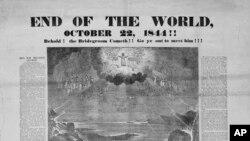
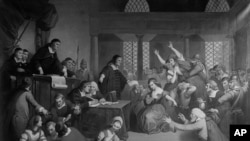
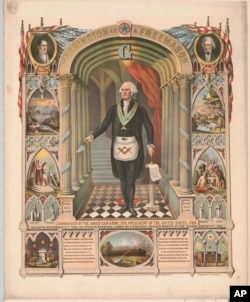
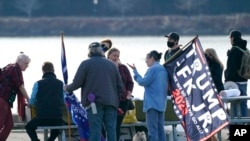

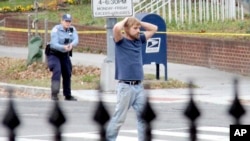






Forum